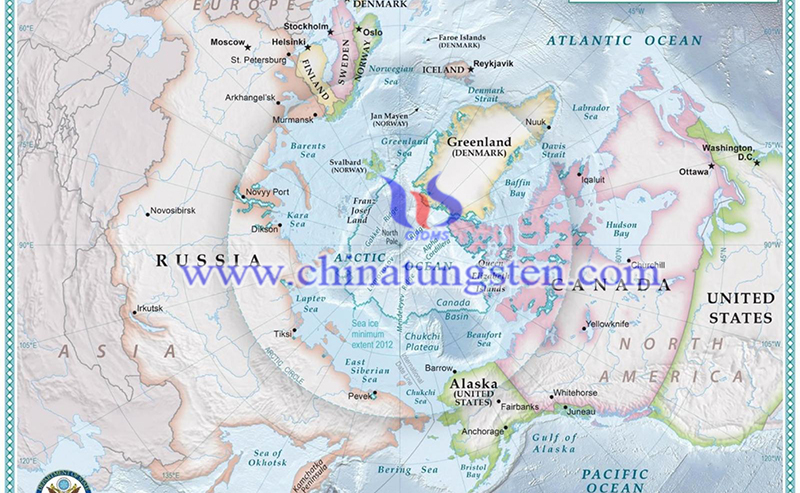Russia Strengthens Forces in Arctic for Rare Earths and Oil Resources
- Details
- Category: Tungsten's News
- Published on Sunday, 06 December 2020 22:47
Russia Strengthens forces in the Arctic regions, the place where is rich in resources such as oil, natural gas, and rare earths. Recently, there have been reports that Russia will initially complete the deployment of air power by the end of 2020. In 2021, it will further deploy fighters and helicopters, and improve the deployment of the garrison command system and communication network, thus becoming the first country to deploy air power in the region.
Russian strengthening of the Arctic military is an important part of its current global strategy. During the Cold War, the Soviet Union established its own military bases around the world in order to better compete for hegemony with the United States.

In recent years, to counter the containment of the United States and the West and expand its influence, Russia has adopted a more active posture in its global layout. Not long ago, it reached an agreement with Sudan and decided to establish a naval logistics support center in the country.
The Arctic region is rich in resources such as oil, natural gas, and rare earths. With the intensification of global warming, the strategic value of the waterway has also received more attention, and it may become an alternative choice for other waterways, which will have a profound impact on the world economy, trade and geopolitics.
In recent years, the United States, which has long regarded the Arctic as an "important border", has made frequent moves. In June 2019, the U.S. Department of Defense released a new version of strategy report, outlining its strategic approach to protecting U.S. national security and interests in the "strategic competition era".
In fact, the United States has been strengthening its military deployment in recent years. It has conducted cruises and military exercises for many times. In September this year, US Senator Dan Sullivan stated that the United States will deploy 150 fifth-generation fighter jets in the region of Alaska.
At present, Russian air power is mainly composed of the Northern Air Force, which is responsible for the western and central regions, and the Northeast Command which is responsible for the Northeast and Bering Strait. It is equipped with MiG-29K, Su-33, Su-24M, and MiG- 31 class fighters.
In the future, if a large number of US F-35 fighters are stationed in Alaska, the current Russian air power will be suppressed in terms of quantity and quality. Therefore, to better protect its various interests, it is imperative to strengthen the region’s air power.
The Arctic is the shortest route for the United States to launch an air-space attack on Russia. Through the airspace, the US military can conduct rapid global strikes on the strategic targets from three directions: east, center, and west. Due to the lack of densely deployed aerospace defense reconnaissance and target indication systems, it is difficult to take appropriate defensive measures in time.
Therefore, strengthening the Arctic Air Force is of great significance to Russia's homeland security. To quickly restore the aerospace defense system after the first round of strikes, the deployment of fighter-interceptors, unmanned long-range reconnaissance aircraft, unmanned interceptors, and other equipment with high mobility and stealth should be accelerated. Forces in the Arctic regions, will also help the country to take the benefits of the resources such as oil, natural gas, and rare earths.
- Rare Earth Manufacturer & Supplier, Chinatungsten Online: www.chinatungsten.com
- Tungsten News & Prices of China Tungsten Industry Association: www.ctia.com.cn
- Molybdenum News & Price: news.molybdenum.com.cn
- Tel.: 86 592 5129696; Fax: 86 592 5129797; Email: sales@chinatungsten.com



 sales@chinatungsten.com
sales@chinatungsten.com